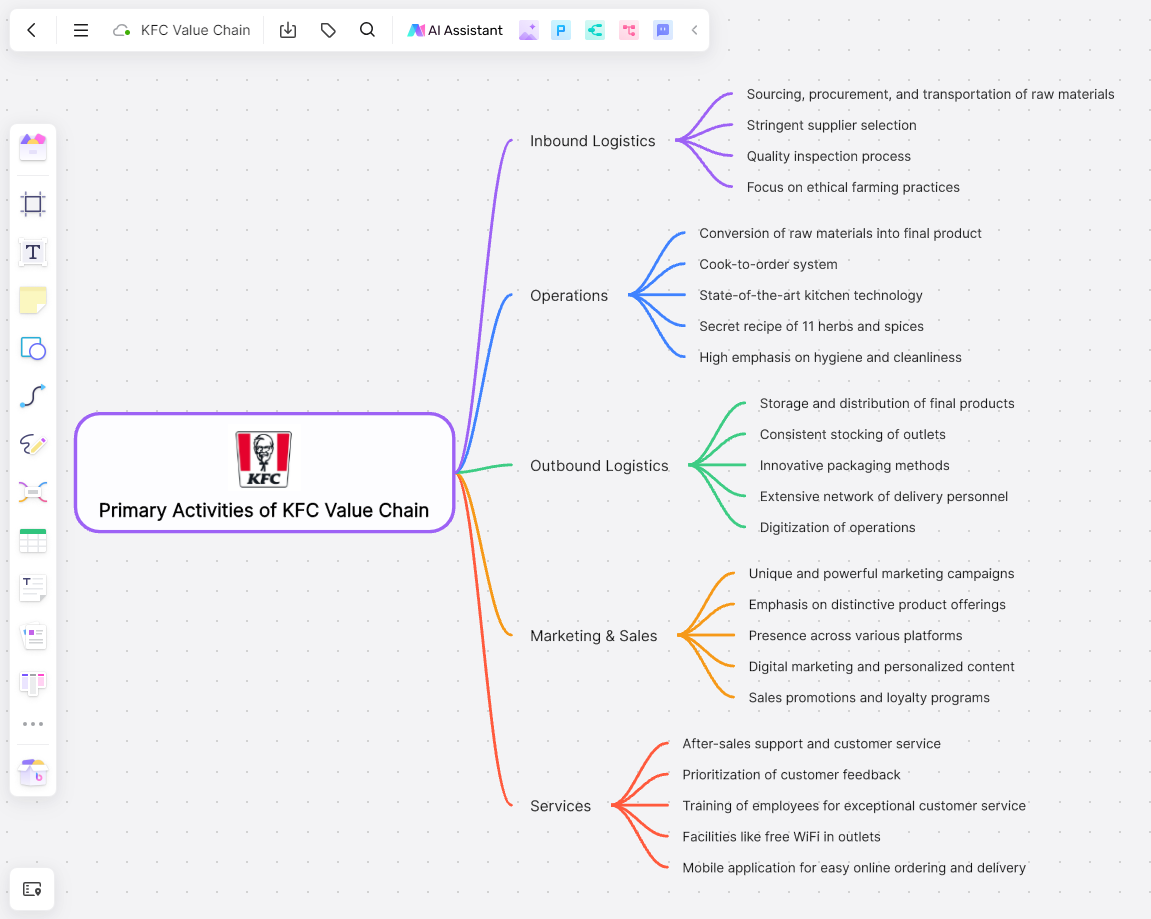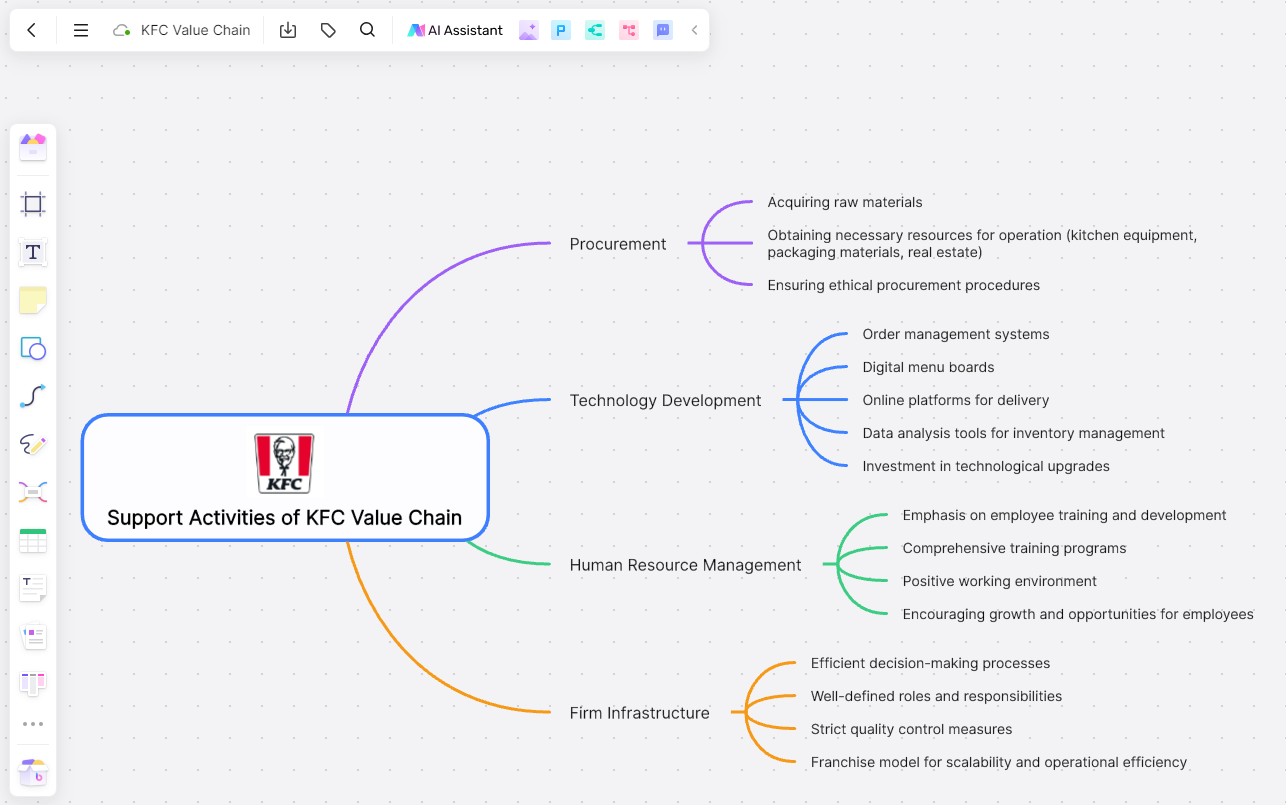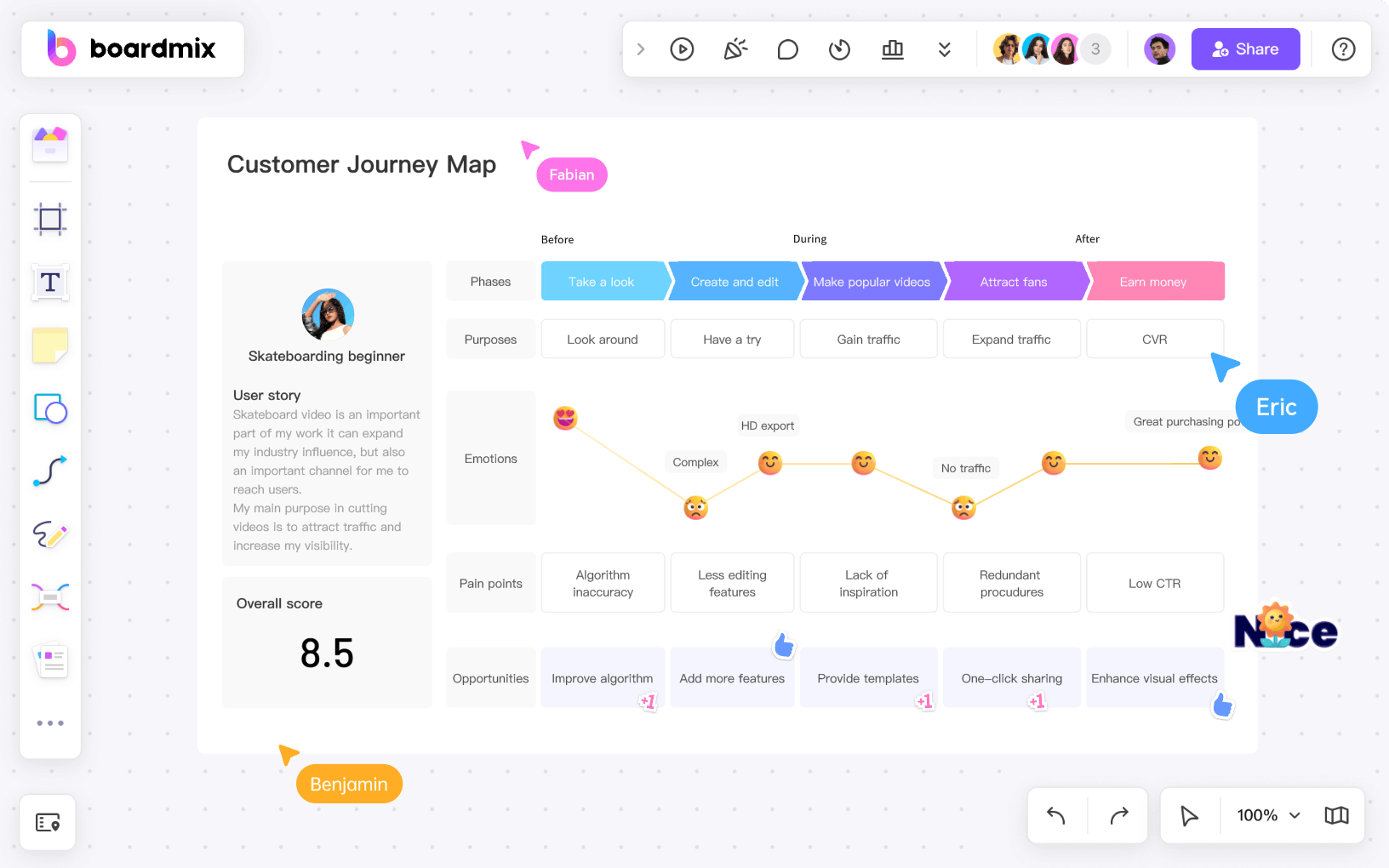Every global brand has a unique chain of processes that ensures their product or service reaches the end consumer in the most efficient manner possible. In this article, we will delve into the Value Chain of KFC (Kentucky Fried Chicken), a world-renowned fast-food chain known for its tasty and succulent chicken delicacies.
Understanding a company's value chain aids in gaining insights about how the firm's operations are intertwined and contribute to delivering superior customer value. The article will cover both the primary activities and support activities in KFC’s value chain.

Primary Activities of KFC Value Chain
Inbound Logistics
In the value chain of KFC, inbound logistics plays a pivotal role. This step involves the sourcing, procurement, and transportation of raw materials, with chicken being the primary ingredient.
KFC is stringent about selecting its suppliers and only partners with trusted and certified poultry farms. The company procures high-quality chicken to ensure that their customers always get the best. Alongside the quality, a considerable focus is given on ethical farming practices as well.
Upon procurement, the raw chicken is subjected to an inspection process for quality assurance before it is transported to various KFC outlets globally. To ensure the chicken remains fresh during transit, appropriate storage conditions with ideal temperatures are maintained.
Moreover, KFC also procures other essential ingredients like spices, sauces, and vegetables from trusted local and international suppliers. The 'secret recipe' for KFC's chicken involves a mix of 11 herbs and spices, which too are sourced from particular providers to maintain the uniformity of taste across all its products.
Operations
The next crucial stage in KFC's value chain is operations, which is all about converting the raw materials into the final product. KFC's operations are an intricate combination of preparation, cooking, and packaging processes that uphold its globally recognized quality standards.
KFC follows a 'cook-to-order' system. This implies that every meal is freshly prepared when an order is placed, ensuring that the customers always get hot and crispy meals. To achieve this, each KFC outlet is equipped with state-of-the-art kitchen technology designed for rapid and efficient food preparation.
A unique aspect of KFC's operations is its secret recipe of 11 herbs and spices. Regardless of which part of the world you're in, the taste of KFC's chicken remains consistent due to the standardized cooking procedures and recipe followed across all its outlets.
Also, KFC places a high emphasis on hygiene and cleanliness. Each outlet adheres to stringent health and safety guidelines to ensure that every meal is not just tasty but also safe for consumption. In the face of the pandemic, KFC introduced contactless delivery and takeout methods in several countries, reflecting the brand's adaptability to global situations.
Further, KFC continually seeks to innovate its operations. For instance, they have experimented with 3D bioprinting technology in Russia to produce lab-grown chicken nuggets as part of a commitment to a more responsible and sustainable method of food production.

Outbound Logistics
In KFC's value chain, outbound logistics signifies the storage and distribution of its final products from their kitchens to the hands of their customers. Despite having a global network of over 24,000 restaurants in more than 145 countries, KFC maintains a robust and efficient outbound logistics process.
KFC ensures that each of its outlets, be it company-owned or franchised, is consistently stocked with necessary supplies. This includes everything from raw chicken and other ingredients to packaging materials. Proper storage facilities and optimal inventory levels are maintained at all outlets to avoid any supply disruptions.
Furthermore, KFC's commitment to delivering hot and fresh meals is evident in their delivery operations. KFC has adopted innovative packaging methods for their food items to retain heat, ensuring the customers get their meals just as they would if they were dining in the restaurant. Also, KFC has an extensive network of delivery personnel and collaborations with leading food delivery apps in numerous countries to cater to the increasing demand for home deliveries.
The digitization of operations has also immensely contributed to optimizing KFC’s outbound logistics. Real-time data management allows the company to track inventory levels and predict demand accurately, thus ensuring efficient supply chain management.
In regions where multiple outlets exist, KFC often employs centralized kitchen systems. These large-scale kitchens prepare food in bulk quantities, which are then transported to several restaurants within the vicinity, thereby enhancing operational efficiency.
Marketing & Sales
Marketing and sales is a significant part of KFC's primary activities in its value chain. The company is known for its unique and powerful marketing campaigns that continue to position KFC as a leading fast-food chain globally.
KFC consistently emphasizes its distinctive product offerings in all promotional materials. The globally recognized "finger-lickin' good" tagline forms the crux of KFC's advertising narrative.
In 2019, KFC allocated around $238 million to advertising expenditure in the United States alone. This strategic investment in advertising is evident in their presence across various platforms - TV, radio, print media, outdoor hoardings, digital ads, and social media campaigns.
Digital marketing is an area where KFC has made significant strides. Leveraging data-driven insights, KFC delivers personalized content to its online audience. This approach, coupled with strategic partnerships with online delivery platforms, has led to a remarkable increase in online sales.
KFC also actively engages in sales promotions, offering special deals, limited-time offers, and meal combos to attract and retain customers. Their rewards program, known as 'Colonel’s Club,' offers loyalty points to frequent customers, which can be redeemed for future purchases.
Furthermore, KFC uses local cultural insights to drive their marketing strategies in different regions. For example, they introduced the 'Chizza' (a fusion of Chicken and Pizza) in Asia or the 'Chicken & Waffles' in the USA. These region-specific campaigns ensure relevancy and resonance with their target audience.
Services
The 'Services' section of KFC's value chain focuses on after-sales support and customer service that enhance the overall customer experience. The quality of these services plays a significant role in building brand loyalty and customer retention for KFC.
KFC prioritizes customer feedback and makes it easily accessible through various platforms like their official website, mobile application, and social media channels. This allows the company to gain valuable insights into customer preferences and areas for improvement.
Training its employees to deliver exceptional customer service is another area where KFC excels. The company has comprehensive training programs designed to equip their staff with the skills necessary to provide efficient service and handle customer grievances effectively.
As part of its services, KFC also offers facilities like free WiFi in many of its dine-in outlets, contributing to a more enjoyable dining experience for customers.
KFC's mobile application plays a vital role in enhancing their service offering. Besides providing a platform for easy online ordering and delivery, the app also features order tracking, personalized offers, and a store locator for convenience.
Amid the COVID-19 pandemic, KFC adapted swiftly by implementing safety measures like contactless delivery, sanitation stations, and socially distanced seating arrangements in their outlets. This quick response ensured a safe and comfortable dining environment for their customers, reflecting KFC's commitment to prioritizing customer welfare.
Support Activities of KFC Value Chain
The success of KFC's primary activities in its value chain is heavily supported by a range of indispensable supporting activities. These activities provide the backbone to KFC's operations and add value at each step of the process.

Procurement
Procurement, in the KFC value chain, is not limited to just raw materials but also includes acquiring resources necessary for operation. This can range from kitchen equipment to packaging materials, even up to the acquisition of real estate for outlets. KFC ensures that procurement procedures are carried out ethically, contributing to its status as a responsible and sustainable company.
Technology Development
Technology has been instrumental in transforming many aspects of KFC’s operations. Be it order management systems, digital menu boards, online platforms for delivery, or data analysis tools for inventory management; technology contributes significantly to the overall efficiency of KFC. The company continues to invest in technological upgrades, reflecting its commitment to staying on top of industry advancements.
Human Resource Management
KFC values its people as their greatest asset. The company has robust human resource management practices in place, emphasizing employee training and development. KFC provides comprehensive training programs designed to equip their staff with the skills necessary to provide exceptional service. In addition, the company strives to create a positive working environment, encouraging growth and opportunities for all employees.
Firm Infrastructure
Firm infrastructure refers to a company’s support systems and organizational structures. For KFC, this includes efficient decision-making processes, well-defined roles and responsibilities across various levels of management, and strict quality control measures in place to ensure product consistency across all outlets. In addition, the company’s franchise model allows for scalability while maintaining operational efficiency.
KFC Value Chain Analysis Example
A simplified version of the KFC value chain analysis could be presented visually using our whiteboard solution Boardmix. This easy-to-understand diagram summarizes the key aspects mentioned above and provides a quick reference guide for business professionals.

Key Takeaways: Free Analysis Templates & Tool
Understanding KFC’s value chain offers valuable insights into the coordinated efforts required to deliver a single product to the consumer. The interconnectedness of primary and support activities, from procurement to after-sales service, contribute to KFC's global success. It reiterates that every activity in the value chain adds to customer value and satisfaction. Utilize our pre-built value chain template on Boardmix to create your value chain analysis, offering a clearer perspective of your business operations.
Understanding your brand's unique position in the market can give your business a competitive edge. Boardmix is an excellent tool for conducting a brand positioning analysis, providing various benefits.

1. Structured Analysis
With Boardmix, you can use or create custom templates for your brand positioning analysis. These templates can guide you through the process, ensuring that all vital factors - such as Unique Selling Proposition (USP), target audience, brand values, brand personality, and key differentiators - are thoroughly addressed.
2. Collaboration
Brand positioning analysis often requires insights from various team members - from marketing to product development. Boardmix's collaboration features make it easy to involve your entire team in the process, facilitating an exchange of ideas and perspectives that can enrich your analysis.
3. Accessibility
With Boardmix, your brand positioning analysis is not just a static document. It's a dynamic resource that's accessible to your team members anytime, anywhere. This makes it easier to keep everyone aligned on your brand's positioning and strategic direction.
4. Iterative Refinement
The market is constantly evolving, and so should your brand positioning. Boardmix makes it easy to update your analysis as your brand grows and the market changes. You can easily add new insights, adjust your strategies, and keep your team informed about these changes.
5. Integrated Feedback
The platform allows stakeholders to provide their feedback directly on the analysis. This integrated feedback system streamlines communication and makes it easier to refine your brand positioning based on valuable input.
6. Historical Reference
Your previous brand positioning analyses on Boardmix can serve as valuable historical references. Comparing your current positioning with past strategies can offer insights into how your brand has evolved.








